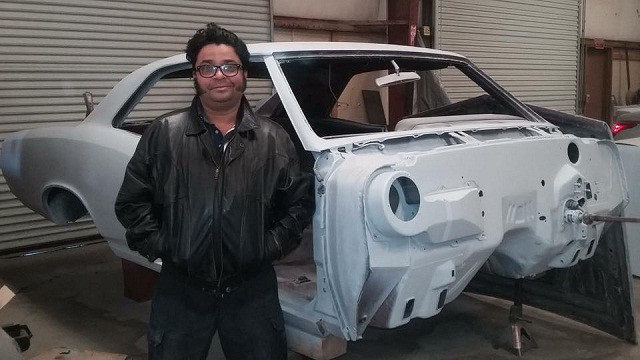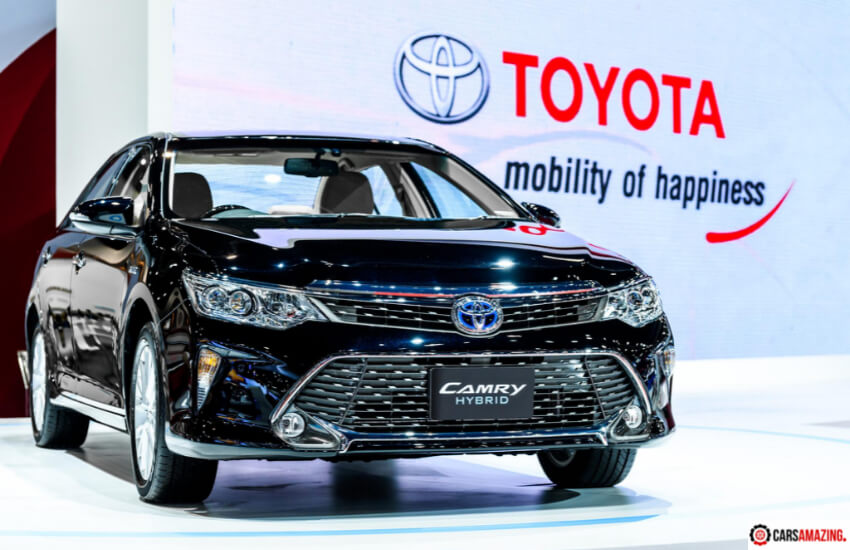Last Updated on February 12, 2023 by Leepu Da Maxim
The average cost of replacing the alternator on a Toyota Camry can range from $250 – $1000. The alternator is an essential part of your engine and is responsible for powering the electrical units such as the radio when your car is running. It also recharges the vehicle’s battery by drawing energy from the engine and converting it to usable electricity.
Key Takeaways
- The exact cost of replacing the alternator varies depending on the model year of the Toyota Camry and the part you use
- If you use a new alternator then it will cost you more compared to installing a used alternator
- If you are not certain about the Toyota Camry alternator replacement cost then you should get a quote from a trusted mechanic or repair shop for the estimated cost
- While replacing an alternator with a new one, you should ask for a warranty on the replacement alternator in case of any defects or issues
Below is an example of alternator replacement cost at various top auto shops; we’ve also included the cost of parts at some leading online stores to help you decide where to get the parts.
| Auto shop name | Work | Warranty | Cost |
| Your mechanic | Parts and labor | 1 year | $270-$830 |
| Midas | Parts and labor | 1 year | $172-$943 |
| NAPA | Parts and labor | 2 years | $260-$1000 |
| Walmart | Parts | Limited | $100-$750 |
| Amazon | Parts | Limited | $213- $945 |
What Is The Function Of An Alternator?
The alternator is the component that is responsible for charging your car’s battery and powering the electrical components when the car is running. When the car is turned off, components such as window switches, lights, radio, and USB ports are powered by the battery. When the car is turned on, the alternator recharges the battery to replenish it and powers these components.
The alternator draws power from the engine and is connected via a drive belt, also known as the serpentine belt. The alternator converts the energy drawn from the engine into electricity. The system is quite simple, and it needs to be regulated to prevent undercharging or overcharging components. Older cars have a voltage regulator, while newer cars have an engine control module to regulate the alternator.
What Are The Signs Of A Bad Alternator?

How do you know when you need to replace the alternator in your Toyota Camry? When the alternator stops functioning correctly, you will experience some problems. Some common signs of a failing alternator are; the car refusing to start, hard starting, engine stalling, and the battery light coming on. If you experience any of these issues, it is a sign that the alternator needs to be replaced. Let’s have a closer look at these problems.
1. Car Won’t Start
One primary function of the alternator is to charge the battery using the energy produced by the engine when the car is running. When the car is off, it needs the power in the battery to turn back on. When the alternator is faulty, it won’t recharge the battery, and the car won’t turn on. If you jumpstart the car and it runs, the problem is with the battery. But if your engine dies again within minutes of jumpstarting your battery, the problem is with the alternator.
2. Hard Starting
When the alternator isn’t charging the battery, you’ll have trouble starting the car, commonly known as a hard start.
3. Engine Stalling
Even with a running engine, a faulty alternator lacks what it takes to keep your battery charged. Since the alternator only works in fits and starts, you may find your car stalling at odd times. This stalling is due to the fuel injectors failing to fire because they need electricity to do their work. When the alternator is faulty, your battery won’t be consistently charged, and fuel injectors won’t get the energy they need, thus causing your engine to stall.
4. Dim Lights And Other Electrical Issues
A faulty and dying alternator causes a myriad of electrical issues, which manifest as the vehicle’s inability to perform at standard power. You may notice that lights are dimmer if the electricity isn’t enough or even brighter if the alternator sends too much electricity. Automatic windows may open or close more slowly than usual, the dash lights may appear dim, or flicker and the entertainment system may shut down on its own.
5. Whining And Squeaking Sounds
A faulty alternator will make some annoying sounds when the engine is running. Since the alternator receives energy from the engine using a belt, the belt may wear out, failing to turn the alternator fast enough to generate enough power. A worn-out belt will cause some odd sounds to come from the engine, and these sounds will signal you of a failing alternator. Worn bearings inside the alternator could also cause odd sounds. If you experience any odd sound underneath your hood, consult your mechanic as soon as possible, even if the engine is running.
6. The Battery Light Comes On
Another indicator of a faulty alternator is when the battery-shaped warning light comes on while you’re driving. Sometimes when you turn the ignition, this light comes on for some time he goes off when the engine starts running. If the light remains turned on after the engine has been running a few minutes, there’s a huge possibility that your charging system and especially the alternator, is failing.
Can I Drive With A Faulty Alternator?
A faulty alternator doesn’t cause further damage to the vehicle, but it makes your car less reliable. If you notice a failing alternator, you can still drive your car to the auto shop to have it checked. Please do not ignore the signs since the car may stall when you need it the most. If the alternator is overcharging or undercharging, it may damage some electrical components, and that’s more reason to have it checked.
What Is Done During Alternator Replacement?
When it’s time for alternator repair or replacement, your mechanic will check the charging system to see if the battery is in perfect condition and check the battery cables for corrosion. They will also inspect the drive belts and alternator output for any malfunction. After determining that the alternator is faulty, these are the steps that will follow:
1. First, the mechanic will disconnect the battery to prevent grounding a live wire
2. After disconnecting the battery, the mechanic will remove wires from the back of the alternator
3. Next will be removing the belt from the pulley
4. After removing the belts, the bolts that connect the alternator and bracket are removed, and the alternator is taken out.
5. A new alternator is installed
Winding-up
A complete alternator replacement on a Toyota Camry can be pretty expensive depending on the model year and what parts are used. If you are looking to save some money on alternator repair, we recommend going to an independent mechanic where you can use aftermarket parts. Aftermarket parts are a lot cheaper than OEM parts, and they can reduce the cost of replacement significantly. You can also get a reconditioned or rebuilt alternator which is substantially cheaper than buying a new one.
Always replace your alternator and any other faulty part when you notice it is damaged. Doing this prevents further damage to your car and saves you money in the long run. If you notice any of the six signs of a faulty alternator that we discussed above, call a trained mechanic to come and service your car. A good mechanic will fix the car in no time, and you can go back to the road safely and sooner. Happy trails.

Hi, I’m Leepu Da Maxim, a dedicated car enthusiast with over 10 years of experience in this field, and I’m thrilled to share my passion and expertise with fellow car enthusiasts like you. My journey began in my hometown West Jordan, Utah, where my fascination with the mechanics and design of cars sparked at a young age. Over the years, this passion has evolved into a commitment to providing accurate, insightful, and engaging information about all things automotive through CarsAmazing.
